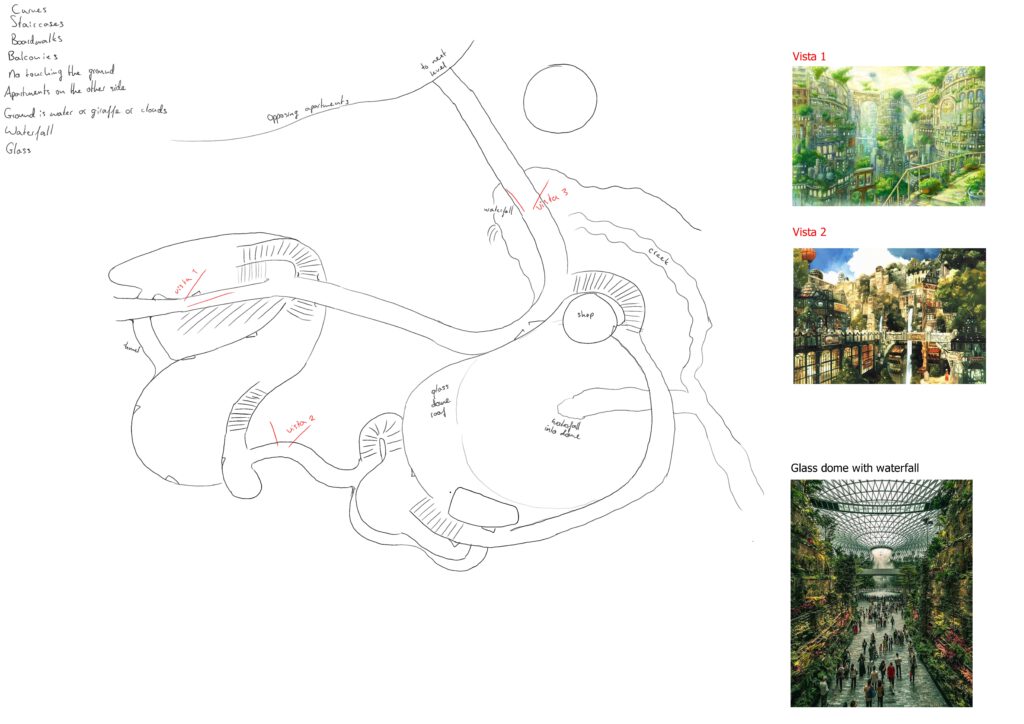Although I had been interested in level design for a longer time, I only started to really practice designing levels around mid 2020 working on Rogue Star. Then, after applying for my first LD position in December of the same year, I ended up with a sort of unofficial mentorship at Starbreeze. I’d do a level design test, they give me valuable feedback on how to improve my layouts, and then I’d practice on my own until the next test.
Towns of Yore
Waterfall Islands
During preproduction of a different version of Towns of Yore I created a level to test out the game’s mechanics. The goal was to find and recruit a new villager on the top most island, while collecting some resources on the way.
I used two large interwoven trees as a macro landmark for orientation. As the player approaches, the giant roots of the tree welcome the player into the jungle. At the end of the jungle, I framed the waterfall using the jungle walls to set it as the player’s goal, and only after that revealed the rest of the open area using a small hill.
Rogue Star
Tetra
In late July 2020, I joined a team of 7 other aspiring developers to make an isometric sci-fi RPG. I initially joined as a programmer but quickly transitioned to level design as I discovered my love for the process. I educated myself by watching GDC talks, and by studying the resources these speakers recommended.
Below you can see the paper mapping and block out for the first pass on Tetra, a solarpunk jungle planet. My goals were to:
> Create a couple of small areas connected by some clear “spaces in beween spaces”
> Stay true to the lore of Tetra by using a lot of curves, verticality, staircases, and bridges
> Creating vistas despite the isometric perspective

PAYDAY 2
Level Design Test
I ended the Starbreeze mentorship at the end of 2021 with this level for their multiplayer coop shooter PAYDAY 2. In this heist, situated in a Manhattan skyscraper, the 4 players are tasked with stealing a laptop from the vault in the CEO’s office. But in order to get into the vault some randomized tasks have to be completed. The position of the rooms is also randomized, and all rooms have to be opened using a saw, forcing the team to roam the more dangerous hallways to find the correct rooms and wait for the saw to finish.
Below you can find the block out and design document of the level. A strict condition for the level design test was that it had to be completed entirely within one week, which means I didn’t have a lot of time to iterate on the design. If I did, I think I would have focused on reducing sightlines in the hallways.
